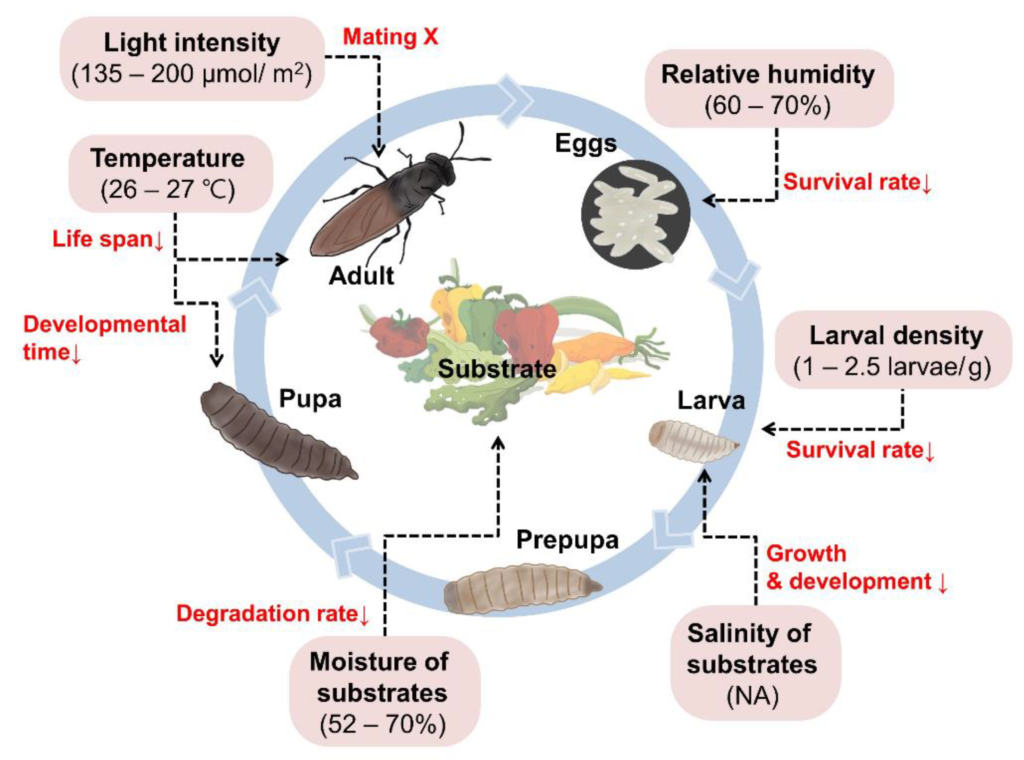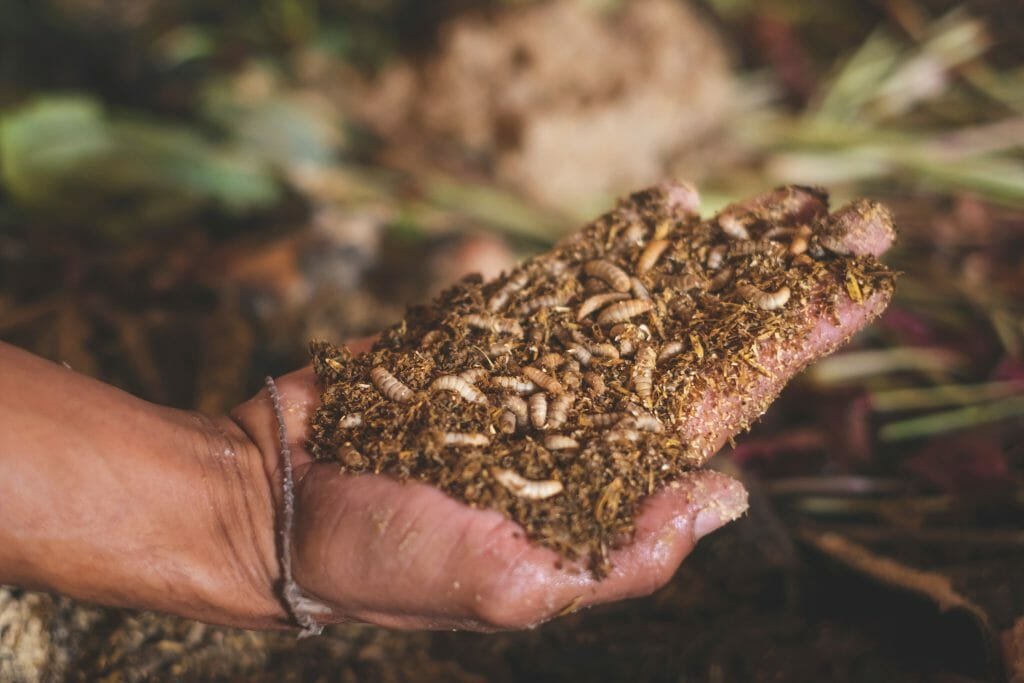Most people instinctively shoo flies away from food, and the idea of maggots crawling in kitchen bins tends to trigger disgust. Yet a quiet revolution is taking place: cities are discovering the remarkable potential of fly larvae food waste processing. Far from being pests, fly larvae are emerging as essential allies in sustainable waste management.
Lithuania Adopts Fly Larvae Food Waste Recycling
In Vilnius, the capital of Lithuania, fly larvae are now part of the city’s waste infrastructure. Partnering with the waste management firm Energesman, the city is using insect larvae to process over 2,700 tonnes of food waste annually. By 2026, the goal is to scale that up to 12,000 tonnes.

This initiative not only cuts down food waste but also saves the city around €2 million per year. Energesman introduced orange food waste collection bags to households and launched a local awareness campaign to improve waste sorting.
Fly Larvae Food Waste Process: Turning Waste Into Wealth
Energesman hosts over six million flies in its plant, each mating every six hours. With females laying up to 500 eggs in their short lifespan, the company handles over three million larvae per month. These larvae devour up to 11 tonnes of food waste in their initial growth stage.
Before transforming into adult flies, the larvae are harvested and processed. They become raw material for animal feed, industrial compounds (like glue, paint, and furnishings), and even organic fertilizer known as frass. Their use extends into research, fishing bait, and agriculture.
Fly Larvae Products: Promising but Complex
While the concept of insect-based recycling is gaining traction, it’s not without challenges. Energesman’s attempts to develop products like fly-larvae-infused paint faced issues with color accuracy. However, early prototypes of furniture and lampshades are promising. The company is also collaborating with universities for further experimentation.
The Regulatory Roadblock
One major hurdle is regulation. In the EU, larvae that consume mixed household waste cannot be repurposed for human-edible insect products due to contamination risks from meat or fish scraps.

Despite these restrictions, fly larvae are widely used in non-edible applications. In Kenya, for instance, Project Mila turns larvae into protein and fertilizer, helping Mombasa tackle food waste and empower farmers.
International Case Studies in Insect Recycling
In Australia, Goterra has used fly larvae for food waste recycling in Sydney and other municipalities as part of a pilot program. For three years, it has supported food waste processing for communities in the Queanbeyan-Palerang Regional Council, handling about 10 tonnes of food waste.
UK’s Fly Larvae Food Waste Future: Waiting on Law
Back in the UK, Flybox CEO Larry Kotch believes it’s only a matter of time before councils adopt this approach. His company builds insect waste processing units for private businesses and supermarkets. Kotch is confident the first UK council insect plant could launch within two years — if regulations evolve.
Currently, DEFRA regulations prevent insects from processing household food waste due to biosecurity concerns. Still, with new mandates for weekly food waste collections in England from March 2026, the pressure to adopt effective alternatives is mounting.
The Global Food Waste Crisis Needs Innovative Solutions
Worldwide, over 1.3 billion tonnes of food is wasted each year. Experts estimate that up to 40% of this waste could be upcycled using insect waste management systems. Compared to traditional disposal methods like landfills or anaerobic digestion, insect recycling offers a low-emission, high-value alternative.

Not only does it reduce landfill methane emissions, but it also generates valuable by-products such as protein and fertilizer. As cities like Vilnius and organizations in Australia and Kenya lead the way, the case for fly larvae food waste solutions continues to grow stronger.




